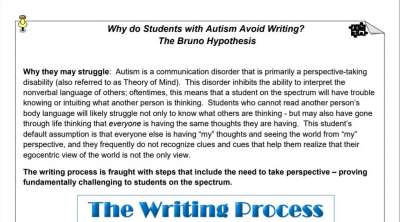Ashley Valentine is an experienced high school English teacher passionate about innovative and diverse teaching practices that frame learning in new ways, and increase engagement, collaboration, and fun.
Creating social media-style lesson plans is more attainable and enjoyable than ever. Read on to find simple and fun ways to bring social network-inspired learning into your classroom.
Gen-Z and Me: Emulating Social Media in the Classroom
Emulating social media in the classroom is an important and innovative avenue for engaging all learners. If we think about our students, we know one thing: they love their cell phones and sometimes even their siblings’ or parents’ phones! And to be fair, even my own screen time– especially over the last few years– has inched slowly toward time frames competitive with those of my students. However, all the scrolling, swiping, and ‘liking’ have been fruitful as a source of inspiration in my work as a teacher.
EMOJIS
In my career as a high school English teacher, I’ve amassed files of paired reading questions for each chapter of the books I teach. Early in my career, I’d display the questions on the board, we’d have whole-class discussions, I’d write the responses on the board, and students would copy those responses. It’s not that the discussions weren’t meaningful, but the exercise was a drain on time, energy, and opportunity. Also, this practice was (and is) impractical for so many of my middle schoolers.
Several years ago I had an idea to make my lessons more tactile and interactive. I desperately wanted to break my monotonous routine of worksheets. With a bit of industry, laminating sheets, and magnets, I sourced and printed a variety of emojis. I started small with all the favorites: a smiley emoji, the blushing emoji, the angry emoji, the laughing-crying emoji– whatever I could think of! I laminated each one and added an adhesive-backed magnet. I had moveable (and adorable) tools to add a little fun to lessons.
On sight, the students really loved them: “Did you make these?” “I love this one!” “My mom uses this one all the time!” After many years of using emojis and expanding my collection to be more intentional, I know I’ll never get rid of them! It’s a go-to resource.
Here’s how they’re used in my classroom:
I dismantle my previously loved worksheets and either write or print out individual questions separately on large magnetic whiteboards on the perimeter of my classroom. If your teaching space is not equipped with whiteboards, consider peel-and-stick versions, or even large sheets or poster boards. Once the questions are displayed around the room, small groups of students write responses to the questions on the whiteboards and then they purposefully adorn their responses with emojis in preparation for sharing out. It’s collaborative, student-centered, and fun. To “capture” the notes for later use, I simply take photos of the responses and upload them to a document that can then be reviewed later.
Emojis offer familiarity and welcome levity, but more importantly, they enhance how students can express themselves. Emojis are a great tool for students who are more reserved, learning English for the first time, or who have unique learning needs. They are a simple way to differentiate! Emojis also possess a lure for visual learners, creatives, and clever minds.
The ultimate “win” for the teacher is just how transferable this tool really is. Where there used to be a reading and paired worksheet, there could be something else more unique. When my creative energies struggle to burn, I know I can use this strategy for a quick, engaging, and student-centered learning setup.
FAUX SOCIAL MEDIA PROFILES
Another appealing tool may be one you’ve forgotten about, faux social media profiles! Perhaps at one time or another, your students were making poster-size or word-processor versions of Facebook or Twitter profiles to demonstrate their learning. Early in my career, I can remember seeing my colleague’s students complete a task like this for figures in history. Each “profile” was complete with photos and posts much like a real Facebook profile and it was clear that students gravitated to such a creative and relevant task.
Here’s how it looks in my classroom (with a little makeover):
For several units, I’ve created hyperdocs modeled after the style and structure of an Instagram profile since Instagram appeals more readily to this generation. Unlike my colleague’s use of Facebook profiles as an end-of-unit, summative project, I use this tool as a method of previewing an upcoming unit. I add images and captions that will orient students to the setting or characters in the novel we’re about to read.
For instance, I designed a faux profile hyperdoc for a young Puritan girl named Anne for our unit on Arthur Miller’s The Crucible. The profile allowed students to interpret details about her life as a teen in the Massachusetts Bay Colony. And you know what? The students were really good at interpreting. It generated a buzz of responses and thoughtful guesses. In your own learning space, students can tour a faux profile hyperdoc independently, with a partner, in small groups, or as a whole class. To add even more interest, consider the inclusion of “highlights” or short-form video content that links to YouTube videos or original content.
You likely have a trove of content to deliver your units. Reflect on that! How can you rebrand and repackage those resources?
As with the use of emojis, this tool offers differentiation in the classroom– it’s visual, engaging, and a discussion-generator. It’s also a great way to facilitate creativity and stoke digital literacy. It takes time to design and create a faux profile, but it is also an incredible learning tool. Whether teacher- or student-created, this tool cultivates skills like how to link images to sources, style a page so that it has a certain aesthetic, generate original artwork, produce a campy username, write clever hashtags, or determine how a follower count can communicate popularity. Again, what I love about this option is how transferable it is. There are so many options.
The important thing to remember is that as a teacher all of the work you’ve already done is still meaningful to what you can do in the future in order to differentiate for and engage your students. A little rebranding and remixing of content can make your teaching more innovative and inclusive, thus meeting the social, physical, and academic needs and desires of your students.
Looking for more inspiration?
Discover more ideas to welcome back your students, from back to school bulletin board ideas, to back to school activities and teaching ideas, at our Back to School Headquarters.















